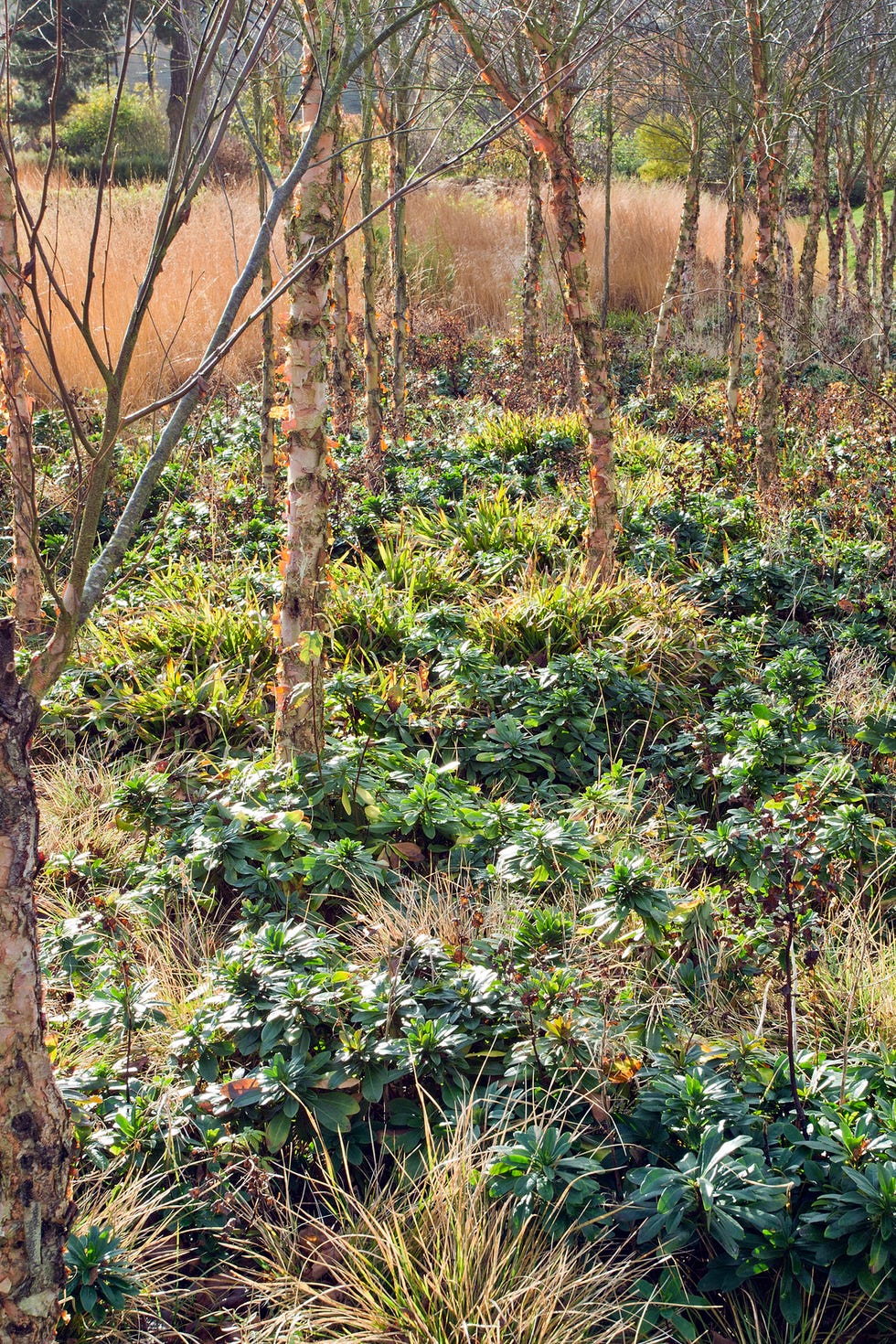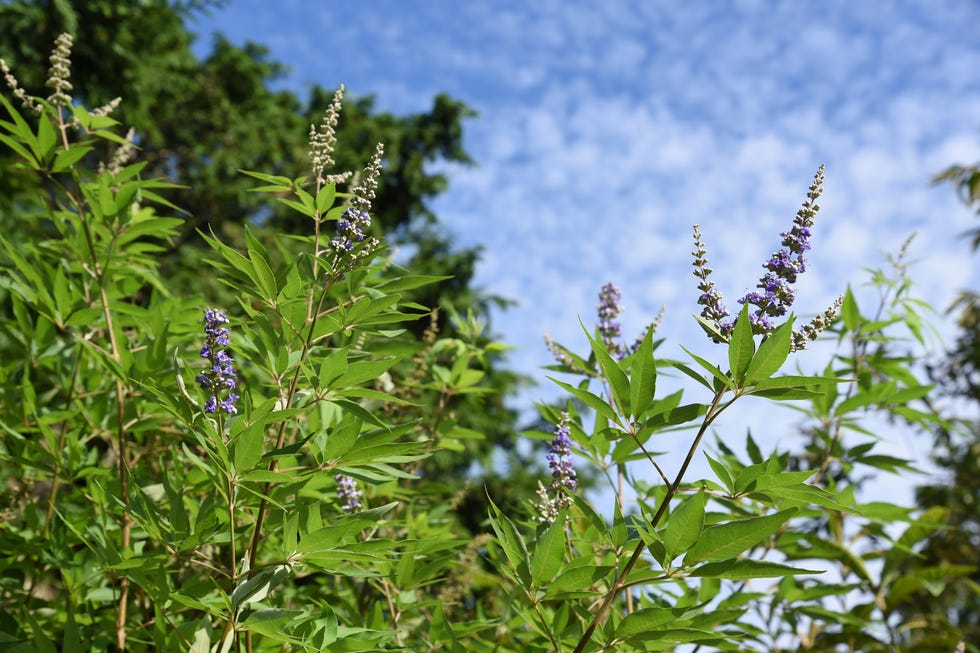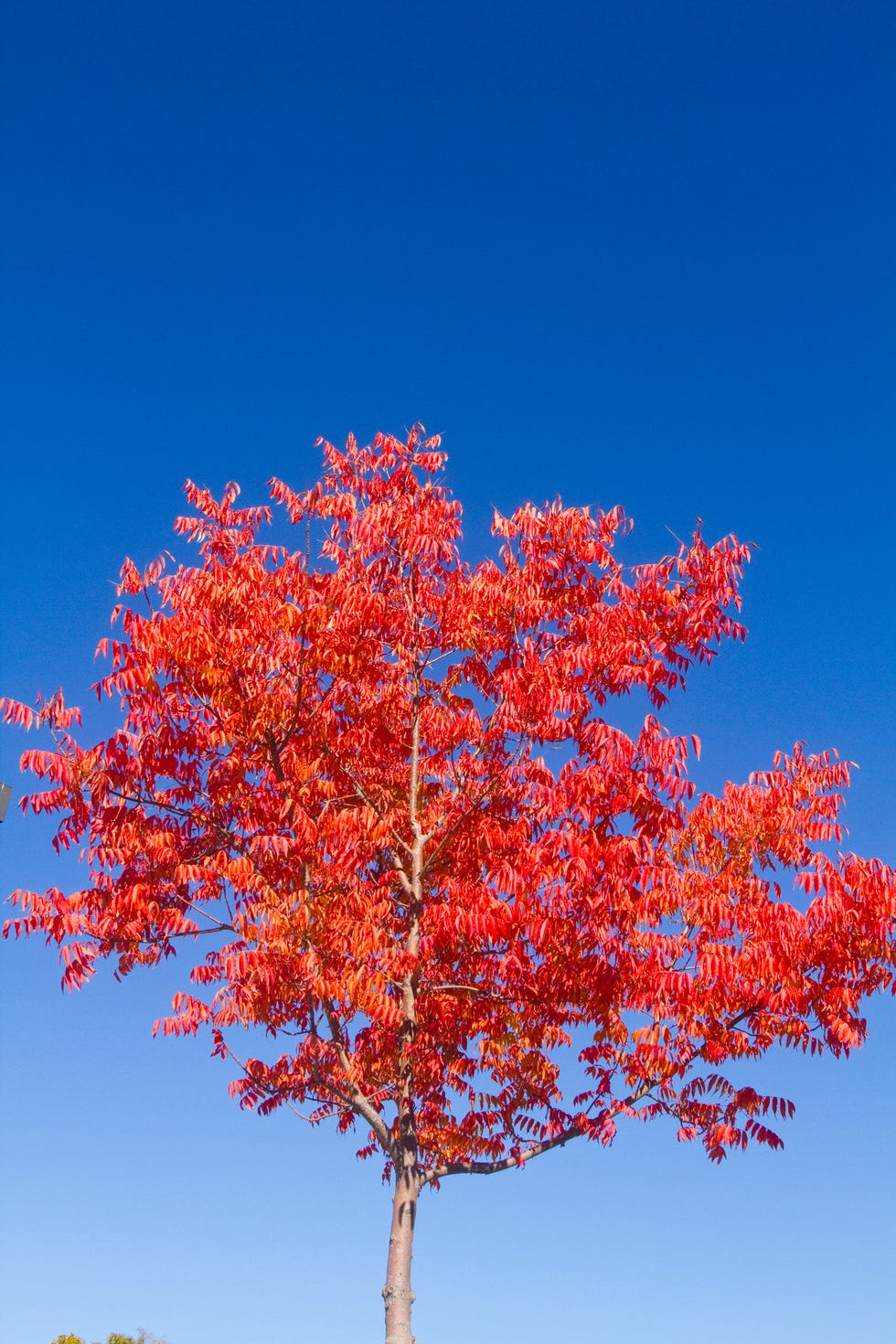
A classic evergreen, this tree produces pine cones and stays verdant all year. It grows two to three feet per year.
USDA Hardiness Zones: 3 to 8
Size: 50 to 80 feet tall; 20 to 40 feet wide
 GETTY IMAGES
GETTY IMAGESWith large white flowers and deep green leaves, this magnolia is a stunning addition to any yard. They grow best in southern states where they can enjoy the mild climate and ample humidity.
USDA Hardiness Zones: 6 to 10
Size: 60 to 80 feet tall

The main benefit of a dawn redwood tree is that it’s fairly low maintenance, even as a sapling. This tree sheds leaves and slender twigs annually and grows in a cone-like shape.
USDA Hardiness Zones: 5 to 8
Size: 50 to 60 feet tall
 GETTY IMAGES
GETTY IMAGESWhile it may surprise you, bald cypresses grow just as well in a yard as they do in water. It has been grown successfully in cities as far north as Milwaukee and as far south as the dry Texas hills.
USDA Hardiness Zones: 4 to 10
Size: 50 to 70 feet tall

Offering dense shade, these trees are best planted in the spring as young saplings as they’re not susceptible to frost. This hardy tree also tolerates wind, drought, and air pollution quite well.
USDA Hardiness Zones: 5 to 8
Size: 50 to 80 feet tall; 50 to 75 feet wide
 YUN HAN XU//GETTY IMAGES
YUN HAN XU//GETTY IMAGESThis lovely tree has show-stopping clusters of fragrant white or blush-pink flowers in spring. The weeping variety is even more stunning!
USDA Hardiness Zones: 5 to 8
Size: 35 to 40 feet tall; 15 to 25 feet wide

Attractive peeling bark and yellow fall color make this birch a good choice for large yards. It’s prettiest when grown as a clump with several trunks. Just be aware it can be messy, shedding small branches on a regular basis.
USDA Hardiness Zones: 4 to 7
Size: About 40 to 60 feet tall and wide
 ROSS M. HOROWITZ//GETTY IMAGES
ROSS M. HOROWITZ//GETTY IMAGESThis favorite tree offers some of the best fall color and is super cold hardy. Look for varieties such as October Glory, which has a reliable bright orange to reddish fall show.
USDA Hardiness zones: 3 to 9
Size: About 40 to 50 feet tall and wide

This lesser-known tree is densely branched and starts out in a more upright shape when it’s young, maturing into a broader shape over time. It has a nice yellow-orange color in the fall.
USDA Hardiness Zones: 4 to 8
Size: 25 to 45 feet tall; about 25 feet wide
 DANITA DELIMONT//GETTY IMAGES
DANITA DELIMONT//GETTY IMAGESHuge pink or white spring flowers, showy red fruit that birds love, and bright red fall colors are the reasons to plant this popular tree. It doesn’t get humongous, so it’s a good choice for smaller lots or areas of a garden.
USDA Hardiness zones: 5 to 9
Size: About 15 to 20 feet tall and wide

This attractive tree is underutilized, but it’s a hardy alternative to the American Elm, which is susceptible to several diseases and pests. It’s a Japanese native that’s a fast grower with pretty peeling bark and branches that form a vase shape.
USDA Hardiness Zones: 5 to 8
Size: 50 to 60 feet tall and wide
 MARK TURNER//GETTY IMAGES
MARK TURNER//GETTY IMAGESThis shrubby native tree has fragrant clusters of white flowers that become purple berries in fall. You can make jam or share with them with the birds. Plant several as a privacy screen or one as a focal point.
USDA Hardiness zones: 4 to 9
Size: About 25 feet tall and wide

Dense branching, purple flowers, and bronze-y new growth make the crabapple an old-fashioned favorite. It doesn’t get huge, so it works well in smaller yards. Plant it as a specimen or in clusters.
USDA Hardiness Zones: 3 to 9
Size: 15 feet tall and wide
 UNDEFINED UNDEFINED//GETTY IMAGES
UNDEFINED UNDEFINED//GETTY IMAGESThis lesser-known little beauty is a fast grower with clusters of gorgeous, fragrant purple-blue blooms in the summer. It can be pruned to achieve a multitrunk display.
USDA Hardiness Zones: 6 to 9
Size: 12 feet tall and wide

This medium-size tree has a nice rounded shape and incredible fall color that ranges from brilliant orange to crimson. And it isn’t messy—the Chinese Pistache doesn’t bear nuts like its cousin, the pistachio.
USDA Hardiness Zones: 6 to 9
Size: 30 fe





